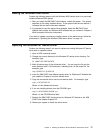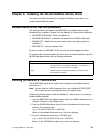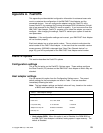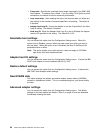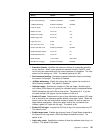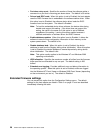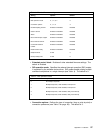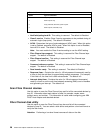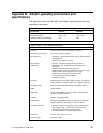
Execution throttle: Specifies the maximum number of commands executing
on any one port. When a port reaches its execution throttle, Fast!UTIL does
not run any new commands until the current command is completed. The valid
options for this setting are 1–256. The default (optimum) is 256.
Fast command posting: Decreases command execution time by minimizing
the number of interrupts. The default is Enabled.
>4GByte addressing: Enable this option when the system has more than 4
GB of memory available. The default is Disabled.
LUNs per target: Specifies the number of LUNs per target. Multiple logical
unit number (LUN) support is typically for redundant array of independent disks
(RAID) enclosures that use LUNs to map drives. The default is 8. If you do
not need multiple LUN support, set the number of LUNs to 0.
Enable LIP reset: Determines the type of loop initialization process (LIP) reset
that is used when the operating system initiates a bus reset routine. When this
option is set to Yes, the device driver initiates a global LIP reset to clear the
target device reservations. When this option is set to No, the device driver
initiates a global LIP reset with full login. The default is No.
Enable LIP full login: Instructs the ISP chip to log in to all ports after any LIP.
The default is Yes.
Enable target reset: Enables the drivers to issue a Target Reset command to
all devices on the loop when a SCSI Bus Reset command is issued. The
default is No.
Login retry count: Specifies the number of times the software tries to log in to
a device. The default is 30 retries.
Table 2. Advanced adapter settings
Setting Options Default
Execution throttle 1–256 256
Fast command posting Enabled or Disabled Enabled
>4GByte addressing Enabled or Disabled Disabled
LUNs per target 0, 8, 16, 32, 64, 128, 256 8
Enable LIP reset Yes or No No
Enable LIP full login Yes or No Yes
Enable target reset Yes or No Yes
Login retry count 0–255 30
Port down retry count 0–255 30
Drivers load RISC code Enabled or Disabled Enabled
Enable database updates Yes or No No
Disable database load Yes or No No
IOCB allocation 1–512 buffers 256 buffers
Extended error logging Enabled or Disabled Disabled
Appendix A. Fast!UTIL 25



